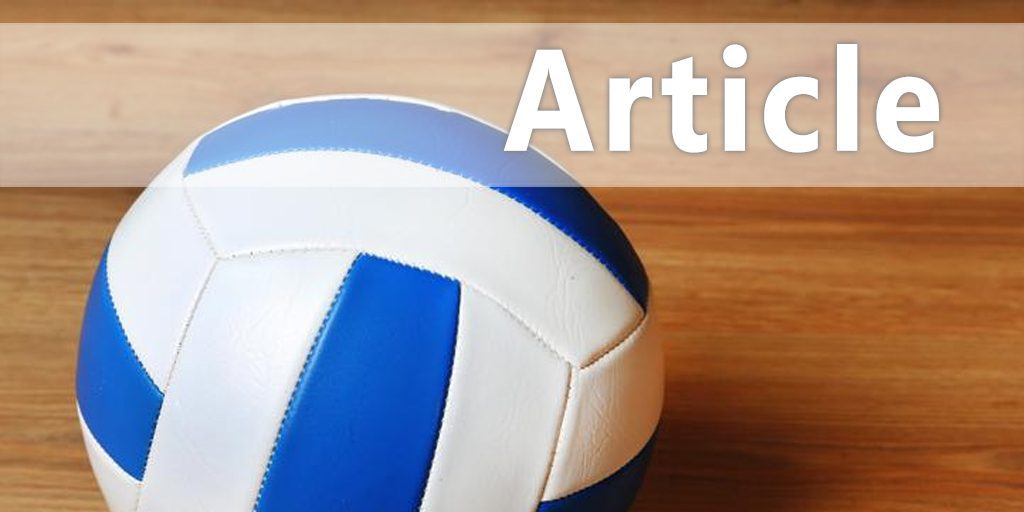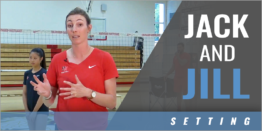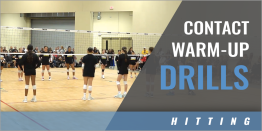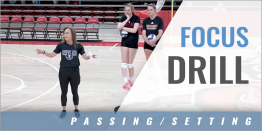|
By: Shawn Myszka, CSCS*D, SPS - Co-Director of Education and Founder of Emergence. Previously Co-Founder and Athletic Performance Director at Explosive Edge Athletics (Edina, Minnesota). Provided By: AVCA
Introduction "Our athletes must get stronger in order to compete." Coaches think it and say it all the time about their players. But what does that statement really mean? What characteristics do we really desire and need our athletes to display to become more competitive? Some coaches think that all that they are required to do is put their athletes through a few strength training circuits or have them perform some heavy squats or hang cleans. Other coaches simply "hand their athletes off" to the strength coach or even an opposite sport coach (i.e. a football coach is sometimes the likely culprit), to take their athletes through the paces of the development program, all while keeping their fingers crossed that the athletes come back as more effective players. With the exception of a few rare instances (where great communication exists between the strength coach and the volleyball staff) there needs to be more ownership being taken to be fully aware of what the athletes are doing to improve. Think of it this way; this single aspect of your athletes' development, can make or break the physical capabilities displayed out on the court. Therefore, it is too important to let go by the wayside. This article will attempt to provide greater insight into some fundamental aspects of volleyball-specific training for performance. It will also shed light on some common mistakes that are often found in practice gymnasiums, weight rooms, and volleyball training centers across the country. After reading the article, a volleyball coach will possess greater knowledge to understand if their strength training program is headed in the right direction. Strength vs. Power Let's go back to the issue of strength for a second. Many coaches are quick to throw around the terms strength and power synonymously. However, it needs to be noted that this is inaccurate; the two are entirely separate qualities. Because of this, it's important to determine the exact difference between strength and power as it pertains to the necessities displayed on a volleyball court. Strength is simply the force that an athlete can generate (it is not dependent on time). On the other hand, power is force times velocity, or more simply stated - strength combined with speed. It's obvious that with this definition that power is actually what we are after! Many coaches get caught up in strength numbers (like increasing 1RM strength in a squat or clean) and continue to require their athletes to lift very heavy loads in a slow fashion. In fact, strength is actually maximized during slow muscle actions and minimized when velocity increases. Inversely, volleyball requires acceleration to produce the necessary force out on the court. Research has actually proven that training induced improvements in maximal strength do not always equate to great improvements in power development (remember: power is the key quality we desire). This becomes even truer the more advanced an athlete becomes. Let's take the vertical jump for example, being that 1). It is a multi-joint, power-oriented movement and measure of performance 2). With the volume of jumping that takes place on the court, many volleyball coaches are very interested in jump performance 3). There has been extensive research done on the subject and the training for its improvement. Research has shown us that jump performance only improves markedly following strength training in subjects who begin their training program with average or below-average strength levels. In contrast, individuals who have been previously strength training for a more extended period of time (greater than six months) or already have higher levels of strength will no longer realize terrific jump increases through heavy strength training. So, we know that other methods must be incorporated to training plans. These methods include explosive-ballistic methods such as plyometrics and medicine ball throwing. Specificity With the words "functional training" being spread around like wildfire buzzwords across the fitness community, it has inevitably leaked into the sporting world, as well. This is unfortunate. In fact, it should be a fundamental thought that all training that is done should actually be functional to the demands that the sport will place on the body of the athlete. Yet, it's not uncommon to see coaches prescribe things like fat-burning interval circuits, stability balls, or standing on a balance board on one leg with your eyes closed. Some of these exercise prescriptions may have their time and place when it comes to the training of those in the general public. But when it comes to training for the sport of volleyball, these things lack functionality and should be kept as far away as possible! Therefore, we know that we need to really start to look at where the rubber meets the road when it comes to the characteristics that are unique to the game of volleyball. When training, we have to account for each of these circumstances and attempt to replicate it as closely as possible. These unique variables include, but are not limited to: predominant movement actions/motor patterns, muscle contraction behavior, time demands, speeds of contraction, range of motion and work vs. rest ratios. No matter if the program is designed right or wrong, the body will react with changes/adaptations resembling the demands that you are placing it under. This is called the SAID principle (Specific Adaptations to Imposed Demands). You will always play the way that you have trained. Thus, do you want to train your athletes to be like race horses or plow horses? The age old cliche', "speed kills", is an accurate one for us to remember in the training of our athletes. Volleyball movements and actions are fast and ballistic. This means that if you want to perform optimally and injury-free, you better be training in that same ballistic manner. There is no exception. The speeds replicated in training movements and positions need to resemble those that occur in competition. During the sport, force is applied for a very limited time and distance, so sport success is determined in mere fractions of seconds. In contrast, many coaches spend a high amount of training time without any regard to speeds/velocities of their prescribed movements. Why would one spend a majority of time teaching our body (namely the nervous system) that it's perfectly fine to go slower to apply our force? I don't believe that there are usually any good answers to that question! In addition, bodies on a volleyball court are all initially started in motion by force being applied to the ground (i.e. not on weight machines or apparatus that lock us into a specific range of motion or the balance board I mentioned above!). In addition to this thought, the body must move in a synergistic manner, at all times. Thus, it is not usually advisable to attempt to isolate muscle groups (this includes abdominal work, as well!) in an attempt to "work" a given area of the body. Rather, we should try to enable the body to move holistically. This is why ground-based movements that are of a closed-chain kinetic manner are more of a premium in successfully designed programs than their open-chain counterparts. Individualization It's always unfortunate to see when a coach incorporates an all-encompassing program for his/her entire team. In contrast, most do not treat every athlete in exactly the same way when it comes to the psyche of that athlete. In the same way that one athlete may respond to a certain way of coaching, he/she may respond to a given physical stimulus differently than his/her peers do, as well. This MUST be taken into account in the overall design of training programs. Many coaches test their athletes to attain measurable criteria to differentiate that athlete from his/her teammates. But very few coaches actually use those testing results productively in constructing that player's future training plan for improvement. However, it should be intuitively obvious that the most effective type of training for a given athlete is dependent on the components and characteristics in which the athlete is most deficient in. We simply can't target these individual weaknesses if our whole team is performing the same training plan on a weekly basis. On that same note, once a program is put down on paper, many coaches make the mistake of just sticking to every variable wholeheartedly. As individuals, we all have our 'off-days' in which we simply do not perform at our normal capacities. On those days, it is more important to focus on giving an athlete rest and recovery so he/she can come back refreshed and ready to get after it in the next opportunity. To achieve optimal sport prowess, every rep must be of the highest possible quality. If the athlete's true feedback mechanism is looked at as being weak or unmotivated and they are forced to "simply push through it" it can be the quick way to becoming overtrained. This overtrained state is hard to reverse and will only hinder performance and increase the risk of injury. Conclusion This article attempted to outline some basic, but very important ideas and thoughts as it pertains to the development of volleyball-specific training programs. All coaches are encouraged to take greater ownership in the development and training of their athletes when it comes to their strength and conditioning. Taking the extra steps to understand more of the optimum training conditions to place your athletes under could be the determining factor to increasing your win total.
|







